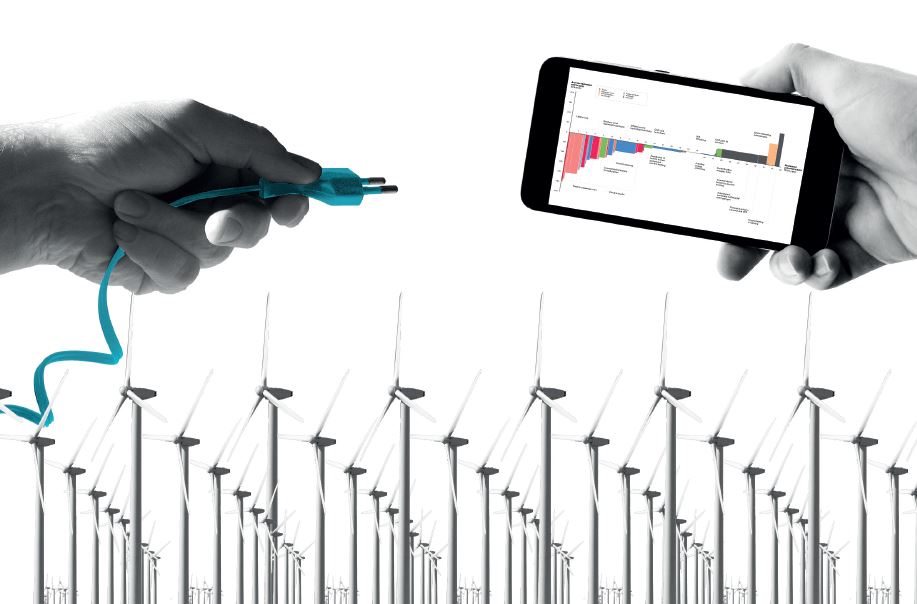According to a report published today, Finland’s emissions can be reduced by almost half through measures that will not, during their lifecycle, cause additional costs and may even produce savings. Wind power and the electrification of transport in particular provide opportunities to reduce emissions cost-effectively.
With the Paris Agreement, the world’s nations pledged to limit the rise in the average global temperature to well below two degrees Celsius above pre-industrial levels and to pursue efforts to limit the increase to 1.5 degrees Celsius. A report from the Intergovernmental Panel on Climate Change (IPCC) published in October emphasised that all countries must undertake rapid and strong measures to reduce emissions.
The report published today by Sitra shows that it is technologically feasible and economically viable for Finland to achieve emissions reductions greater than the current targets. The report proposes a series of actions, an emission reduction pathway for Finland to follow to reduce emissions by 60 per cent by 2030 compared to 1990. The amount corresponds to about 27 million tonnes of carbon dioxide equivalent (27 MtCO2e). This would bring Finland’s measures in line with the Paris Agreement and serve as a milestone in our country’s efforts towards carbon neutrality.
“A rapid reduction in emissions is necessary, otherwise the costs of climate change will go through the roof. It is up to our decision-makers to act immediately and lead Finland along the right track. Decisions are required immediately as major changes are necessary, and their implementation will take time,” says Director Mari Pantsar from Sitra.
Wind power and electrification of transport are especially cost-effective
The emission reduction pathway proposed for Finland by Sitra and the consulting firm McKinsey & Company in their joint report is a collection of abatement measures in the four sectors emitting the most: industry, power and heat, transport and buildings. The report evaluated more than 300 lower-emission alternatives to replace current technologies and fuels. From these alternatives, a series of actions was selected that would lead to the emission reduction of 60 per cent as cost-effectively as possible.
Emissions can be reduced by as much as about 50 per cent through methods whose lifetime costs are the same or even lower than the costs of current solutions. But the measures that will cover the remaining 10 per cent of the required emissions reductions will be more expensive and more uncertain.
“As a result of the rapidly declining prices of battery packs, road traffic electrification will be the single most cost-effective way to reduce emissions. Wind power, on the other hand, will be the most cost-effective way to produce electricity, also when the required storage capacity is considered,” says Janne Peljo, Project Director of Sitra’s Climate solutions team.
The electrification of transport is projected to take place step by step. For example, according to the report, the number of electric and hybrid cars may grow from the current 11,000 up to as much as 800,000 by 2030. The figure is more than three times the government’s current target of 250,000 electric cars. The increase would mean that almost one third of all passenger cars in Finland would by then be electric. The precondition for the electrification of passenger transport and heavy-duty vehicles is a comprehensive network of charging points, which is estimated to cost about 1.5 billion euros.
As regards wind power, an increase of about five gigawatts is required to come online by 2030 in addition to the current capacity of approximately two gigawatts. This corresponds to about 25 per cent of Finland’s total electricity production in 2030. To achieve this target, sufficient capacity is also required both in the permit processes and the construction supply chain. The need for additional wind power must also be taken into account in land-use planning and in the electricity transmission system.
According to the model used in the report, increasing the decarbonisation of industry is the most cost-effective way to manage the last 10 per cent of emissions reductions.
Rapid measures and more ambitious plans are now required from the government
Finland needs a national decarbonisation plan that outlines the path towards decarbonisation for all sectors. A plan is important so that the climate targets can be clarified and predictability beyond electoral terms can be created. It should commit Finland to achieving the emissions reduction target of at least 60 per cent by 2030 and put Finland on track to reach carbon neutrality in the 2030s, balancing its emissions and sinks.
From the viewpoint of the emission reduction pathway it is critical that the government’s actions steer the investments made in the private sector and by individuals towards low-emission solutions.
“The Government’s most important task is to ensure that the infrastructure required for emissions reductions is in place and that companies and individuals are given incentives encouraging them to choose low-emission solutions. Correspondingly, it must be ensured that the existing regulation and incentives do not prevent or complicate investments in low-emission solutions,” Peljo says.
Publication details
Cost-efficient emission reduction pathway to 2030 for Finland:
Opportunities in electrification and beyond
Sitra studies 140
ISBN 978-952-347-082-8 (paperback)
ISBN 978-952-347-083-5 (PDF) www.sitra.fi
ISSN 1796-7104 (paperback)
ISSN 1796-7112 (PDF) www.sitra.fi


















Recommended
Have some more.